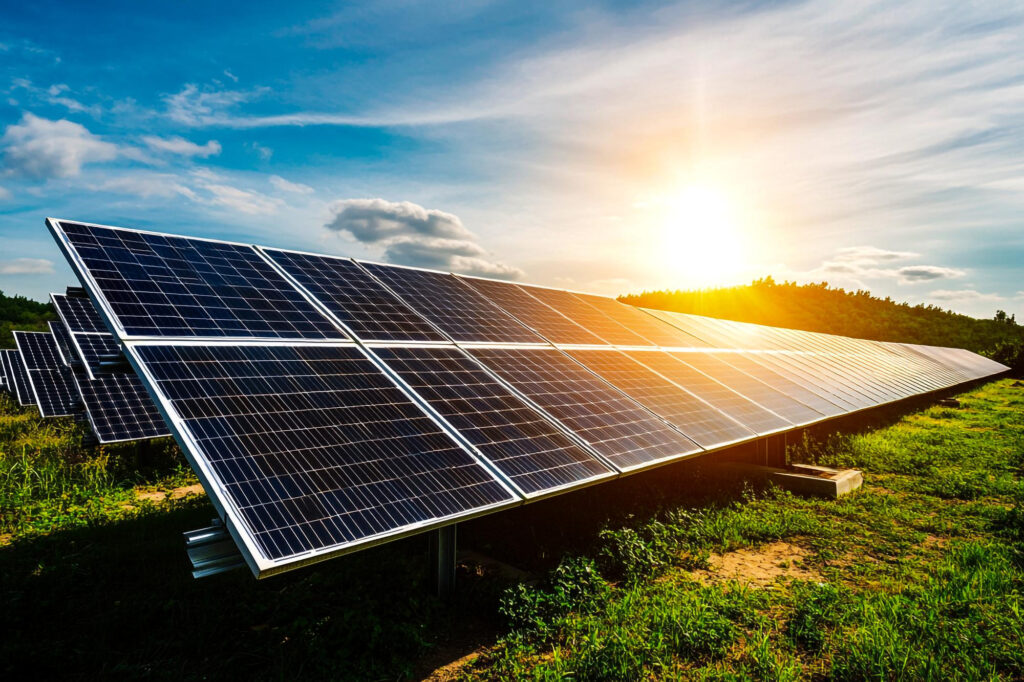Imagine a power source so massive it could run the entire planet for billions of years without breaking a sweat. That’s the sun, folks—a giant fusion reactor in the sky that’s been shining for 4.6 billion years and isn’t slowing down anytime soon. Solar power is our way of tapping into that cosmic energy, and it’s changing the game. Whether you want to reduce your electricity bill or save the planet, here are some incredible facts about solar power that will make you look at the sun in a completely different manner.
Related: How to Get a New Roof for Free: A Guide for Seniors and Homeowners
Fact #1: Solar Power Is Booming Like Never Before
Did you know global solar capacity skyrocketed from a measly 1.2 gigawatts (GW) in 2000 to over 1,000 GW by 2023? That’s enough juice to power roughly 200 million homes! The International Energy Agency (IEA) says solar is the fastest-growing energy source worldwide, and it’s not hard to see why. The cost of solar panels has plunged by over 80% since 2010, making it cheaper than coal or gas in many places. In sunny spots like Australia or California, solar is often the cheapest electricity you can get. Who wouldn’t want a piece of that?
Fact #2: Solar Panels Are Simpler Than You Think
At its core, solar power is just sunlight turned into electricity. Photovoltaic (PV) panels, made of silicon cells, do the heavy lifting. When sunlight hits the cells, it kicks electrons into gear, creating an electric current. It’s like magic, but it’s just physics. A typical home solar system has 20–30 panels, generating enough power to cover most of your energy needs. There’s also solar thermal tech, which uses the sun’s heat for things like warming your water, but PV panels are the rock stars of the solar world.
Fact #3: Solar Saves You Serious Cash
Here’s a number that’ll make your wallet smile: a typical home solar system can save you $20,000–$100,000 over its 25–30-year lifespan, depending on your location and energy use. In the U.S., the federal Investment Tax Credit (ITC) gives you a 26% tax break on installation costs, and many states toss in extra rebates. Plus, with net metering, you can sell extra power back to the grid, turning your roof into a mini money-maker. In 2022, over 700,000 U.S. homes went solar, and most owners saw their bills drop by 50–90%. Not too shabby, right?
Fact #4: It’s a Climate Change Superhero
Solar power is a heavy hitter in the fight against climate change. A single residential solar system can offset 3–4 tons of CO2 emissions per year—equivalent to taking a car off the road or planting 100 trees. Globally, solar helped avoid 1.2 billion tons of CO2 in 2022 alone, according to the IEA. Unlike coal or gas plants, solar panels produce zero emissions while running, making them a clean, green machine for powering our lives.
Fact #5: Solar Creates Jobs by the Millions
The solar industry isn’t just good for the planet—it’s a job-creating powerhouse. In 2022, over 4 million people worked in solar worldwide, from manufacturing panels to installing them on rooftops, per the International Renewable Energy Agency (IRENA). In the U.S. alone, solar jobs grew to over 250,000, outpacing many traditional industries. Whether it’s designing cutting-edge panels or climbing ladders to set them up, solar’s fueling careers and local economies.
Fact #6: The Sun Doesn’t Always Shine (But We’re Working on It)
Here’s the catch: solar panels need sunlight to work, which means no power at night or during heavy cloud cover. But don’t worry—engineers are on it. Battery storage, like Tesla’s Powerwall, can store excess energy for when the sun’s not out, though they cost $7,000–$15,000. Globally, battery installations grew by 50% in 2023, and new tech like sodium-ion batteries could make storage cheaper soon. For now, many solar users rely on the grid as a backup, but the future’s looking bright for 24/7 solar power.
Fact #7: Solar Takes Up Space—But There Are Clever Fixes
Large solar farms can need hundreds of acres, which sometimes sparks debates about land use. For example, a 1,000 MW solar farm might cover 5,000 acres, potentially clashing with agriculture or wildlife habitats. But here’s the cool part: innovators are finding ways around this. Floating solar panels on reservoirs are popping up in places like India and Japan, and “agrivoltaics” lets farmers grow crops under panels. In cities, rooftop solar and building-integrated panels are turning unused spaces into power hubs.
Fact #8: Solar Panels Have a Long Life (But Recycling’s Tricky)
Solar panels are built to last—most come with 25-year warranties and keep producing power even longer. But they’re not perfect. Making panels uses energy and materials like silicon, silver, and rare earth metals, which can have environmental impacts. Recycling is another hurdle: only about 10% of panels are recycled globally due to high costs and limited facilities. The good news? Companies are developing better recycling methods, and by 2030, the industry aims to recycle 95% of panel materials.
Fact #9: The Grid Needs a Solar Upgrade
Adding tons of solar to the power grid is like teaching an old dog new tricks. Grids weren’t designed for energy that fluctuates with the weather, so high solar penetration can cause hiccups. In 2022, some regions faced “curtailment,” where excess solar power was wasted because the grid couldn’t handle it. Smart grids, advanced inverters, and energy storage are helping, but upgrading infrastructure is a must. Countries like Germany are leading the way, with grids handling over 50% renewable energy on sunny days.
Fact #10: The Future of Solar Is Mind-Blowing
Solar’s just getting started. By 2030, the IEA predicts global solar capacity could hit 2,400 GW—more than doubling today’s numbers. Here’s what’s coming:
- Super-Efficient Panels: Perovskite solar cells could hit 30% efficiency (compared to 20–22% for most panels today) and cost less to make.
- Next-Gen Batteries: Solid-state and flow batteries promise cheaper, greener storage, making solar a round-the-clock power source.
- Solar Everywhere: From solar windows to EV charging stations, new designs are blending solar into daily life. In 2023, China tested a solar-powered highway!
- Global Push: Policies like the U.S. Inflation Reduction Act and the EU’s Green Deal are pumping billions into solar, driving costs down further.
- Community Solar: These projects let renters and low-income households share solar benefits, with over 5 GW installed in the U.S. by 2023.
How to Jump Into Solar
Ready to harness the sun? Here’s your quick-start guide:
- Know Your Energy Needs: Check your electric bill to see how much power you use. A 5-kilowatt system covers most homes, but a pro can size it for you.
- Check Your Spot: Your roof or yard needs good sun exposure—no big trees or buildings blocking it. South-facing roofs are ideal in the Northern Hemisphere.
- Find Incentives: Look for tax credits (like the U.S.’s 26% ITC), state rebates, or low-interest loans to cut costs.
- Pick a Pro: Get quotes from certified installers. Check reviews and ask about warranties—most panels are guaranteed for 25 years.
- Plan for Maintenance: Panels need occasional cleaning and checks, but they’re low-maintenance. Consider a battery if you want backup power.
The Sunny Bottom Line
Solar power’s not just a trend—it’s a revolution. It’s saving people money, creating jobs, and giving climate change a run for its money. Sure, there are challenges, like storage costs and grid upgrades, but the sun’s been shining for billions of years, and we’re finally figuring out how to use it right. Whether you’re dreaming of lower bills or a cleaner planet, solar’s got something for you. So, next time you feel that warm sunlight on your face, think about it: that’s free energy, just waiting to power your life.
Related: Expert Tips for Selecting Top Local Siding Installation Companies


.png)




.jpg)
.jpg)






